…amiről feltétlenül tudnod kell.
Az alábbiakban 7, városban is használható esővízkezelő zöld megoldással ismerkedhetünk meg. A lista első három és a hetedik eleme sokszor központi (értsd kormányzati vagy helyi önkormányzati, azaz politikai) döntés vagy beruházás eredménye, ténylegesen csak az első pont az, amit magánberuházásból reálisan nem tudunk megvalósítani. Az összes többi elem azonban mind olyan, amivel kertes házak, vagy akár társas házak is élhetnek.
Fontos megjegyezni, hogy bár egy-egy elem telepítésével elérhető hatás látszólag csepp a tengerben, a tömeges telepítés összeadott hatása már városi szinten is jelentős lehet. Vagyis minél többen telepítenek ilyen megoldásokat, annál jobb lesz a város esővízkezelés képessége.
Nézzük akkor a hét zöld megoldást:
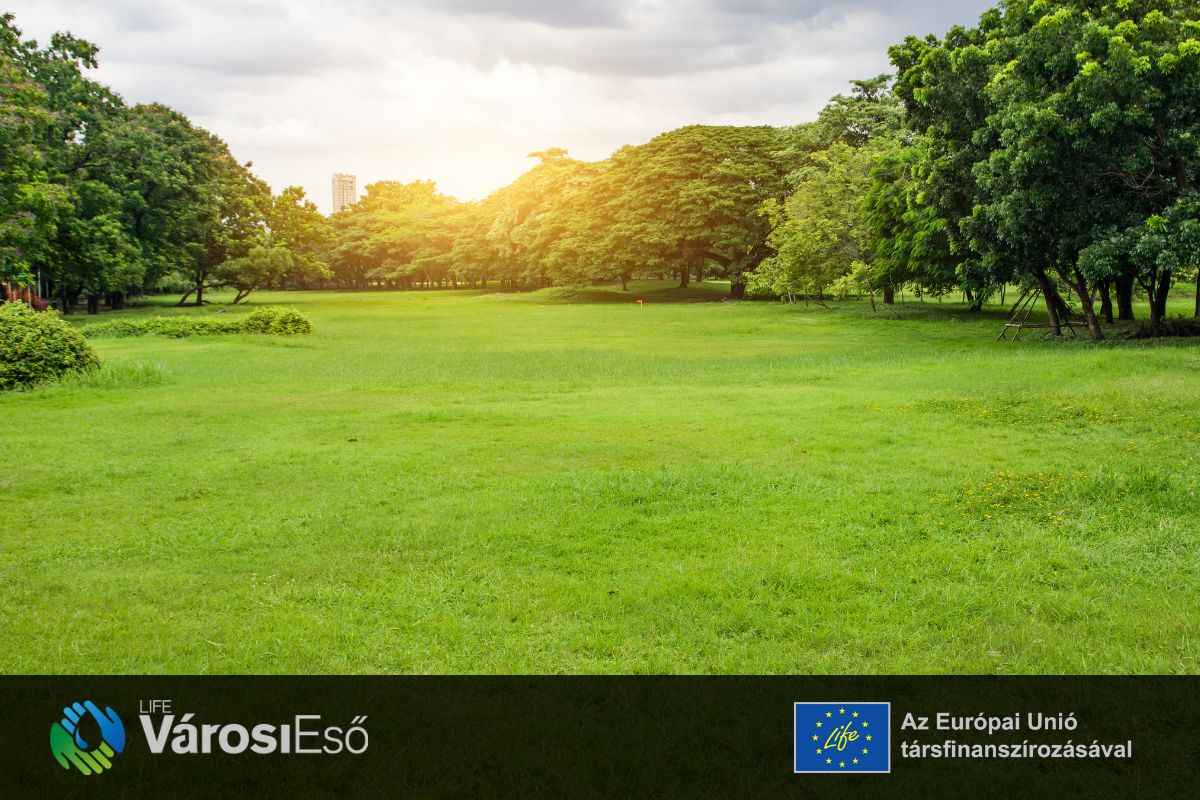
1. A meglévő zöldterületek megtartása (vagy bővítése)
A városok legfontosabb feladata a meglévő zöldterületek megtartása vagy amennyiben erre lehetőség adódik, azok bővítése. Bár most kifejezetten esővíz-kezelési szemszögből közelítjük a megoldásokat, a zöldfelületek nem pusztán az esővízelnyelésben játszanak szerepet. Jelentős a szerepük
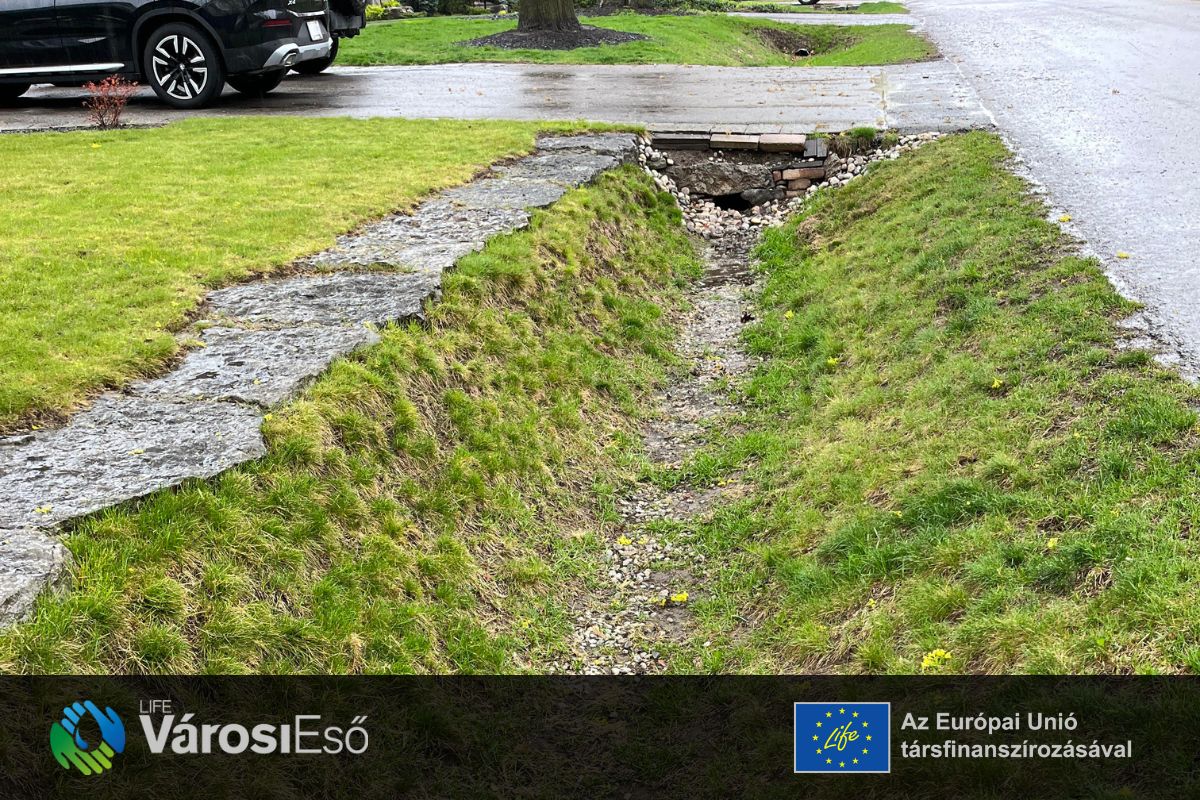
2. Vízelvezető árkok építése
Ezek olyan sekély, többnyire út mellé telepített árkok, amelyek vezetik, tárolják és lassan szikkasztják az esővizet, ezzel tehermentesítve a csatornahálózatra eső terhelést. Alapvetően négyfajta árok létezik, amelyek kialakításukban és képességeikben némileg különböznek ugyan, de a lényegüket tekintve ugyanazt a funkciót látják el. Mégis a helyi környezettől és lehetőségektől függően valamelyik ároktípus kívánatosabb lehet, mint a másik, feltéve, ha pénztárcánk engedi.
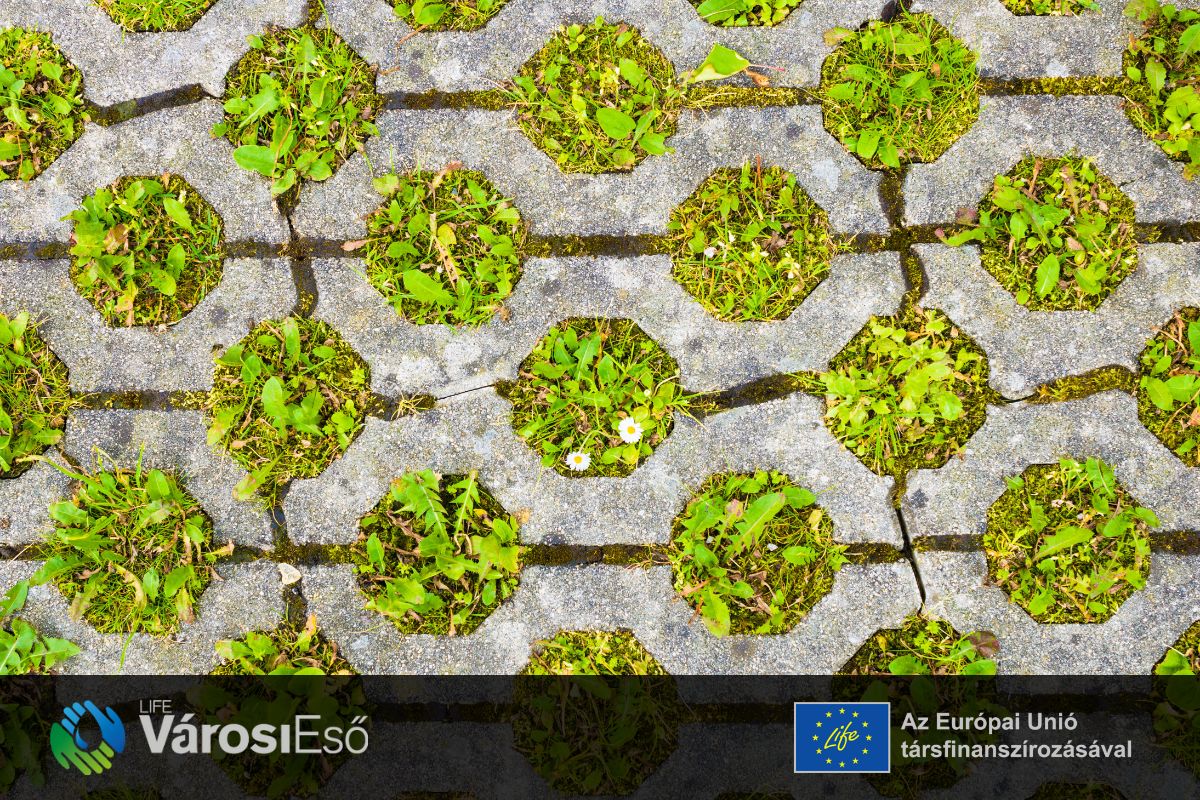
3. Vízáteresztő burkolatok szélesebb körű használata
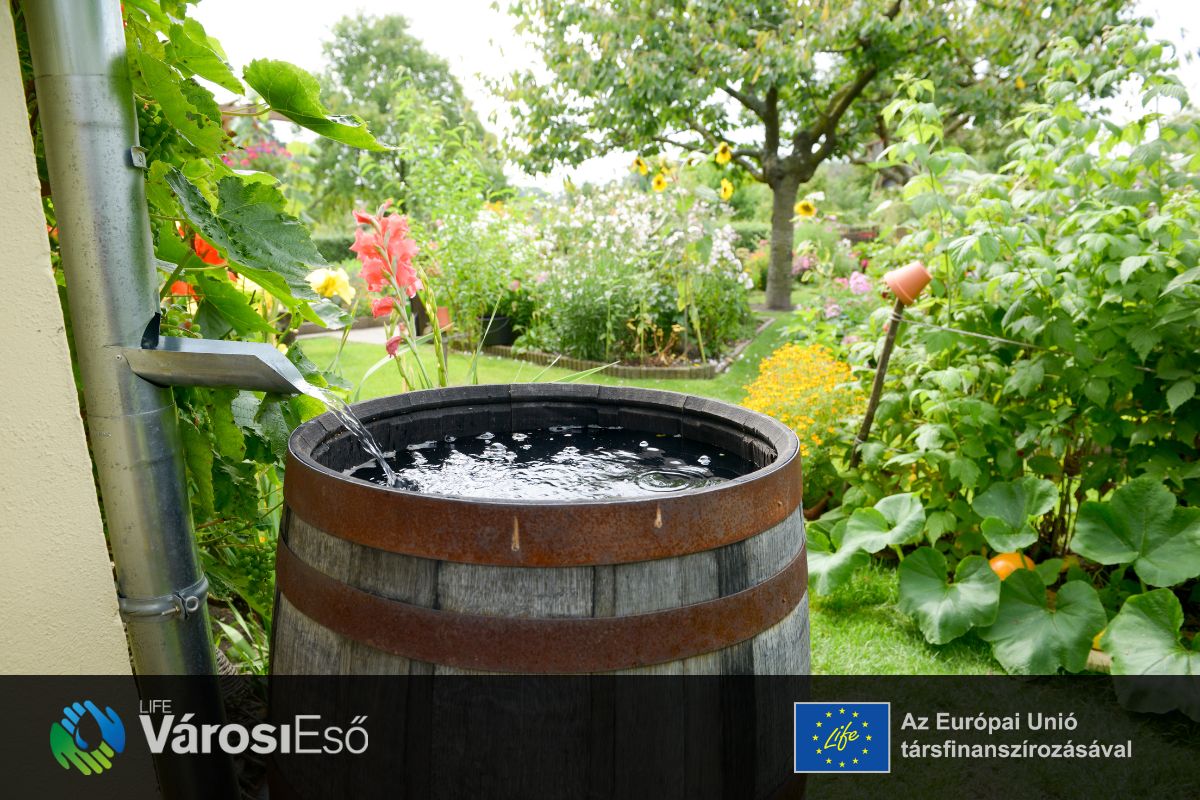
4. Vízgyűjtők telepítése / víztározó ciszternák építése
Bár komolyabb víztározók / ciszternák építtetése valószínűleg központi vagy helyi önkormányzati hatáskör, kisebb vízgyűjtőket bárki használatba helyezhet. Nézzük mik a legfőbb előnyei az eszköz telepítésének:
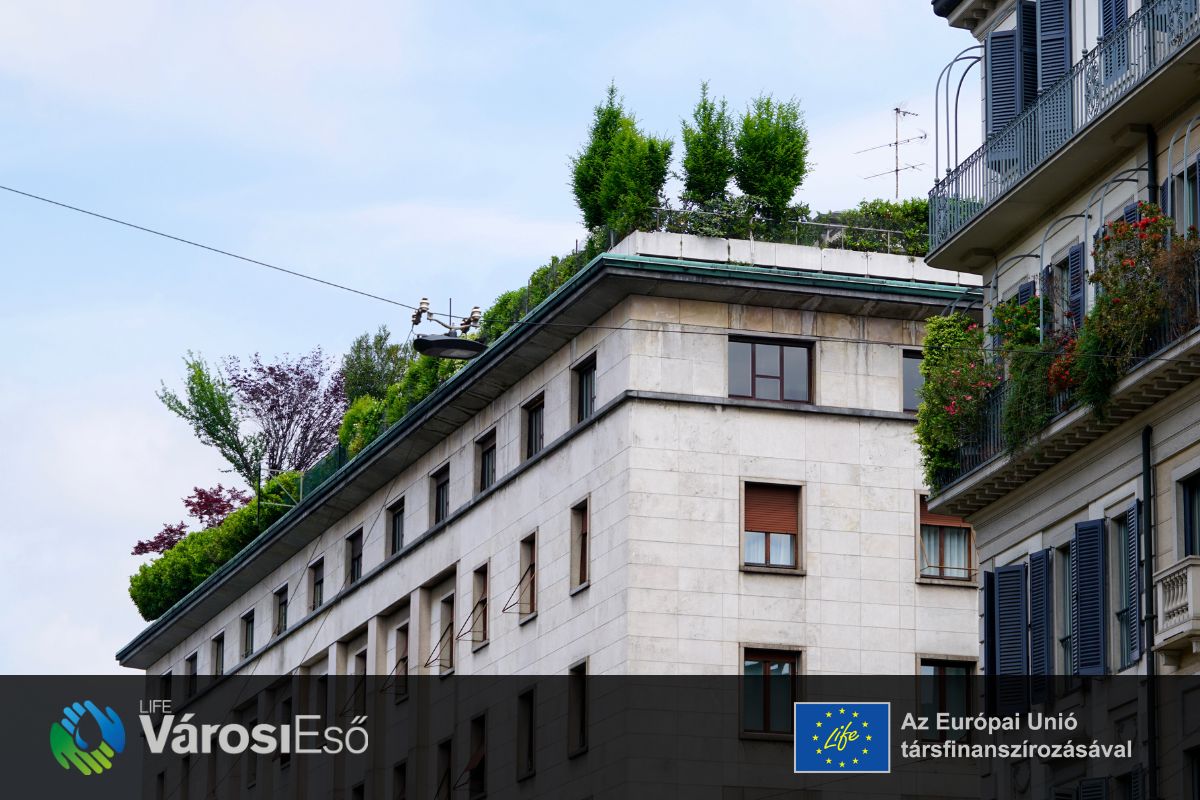
5. Zöldtetők telepítése
Zöldtető alatt növényzettel telepített tetőkről beszélünk. Tulajdonképpen ez kísérlet arra, hogy helyettesítsük az épület által elvett területet a természet számára. Alapvetően két típusú zöldtető létezik: 1) az alacsony fenntartási igényű (extenzív) zöldtető, és 2) a teljes gondozást, öntözést igénylő (intenzív) zöldtető. Teljes kerti funkcionalitást és esztétikai értéket csak az intenzív zöld tetők tudnak nyújtani, az extenzív variánsoknál a növényválaszték a szárazságtűrő növényekre korlátozódik. Zöldtető kialakítható a legtöbb épület tetején. Bár azt gondolhatjuk, hogy ez a lapostetős épületek játéka, és nyilván ott valóban tágabbak a lehetőségek is, ma már egyre több a nyeregtetős megoldás is, így az sem kizáró ok, ha ilyennel rendelkezik a lakóházunk. A zöldtetőre is igaz, ami a vízgyűjtőkre: egy zöldtető nem csinál városi erdőt. De sok zöldtető együttes hatása meglepően jelentős. A zöldtető előnyei röviden:
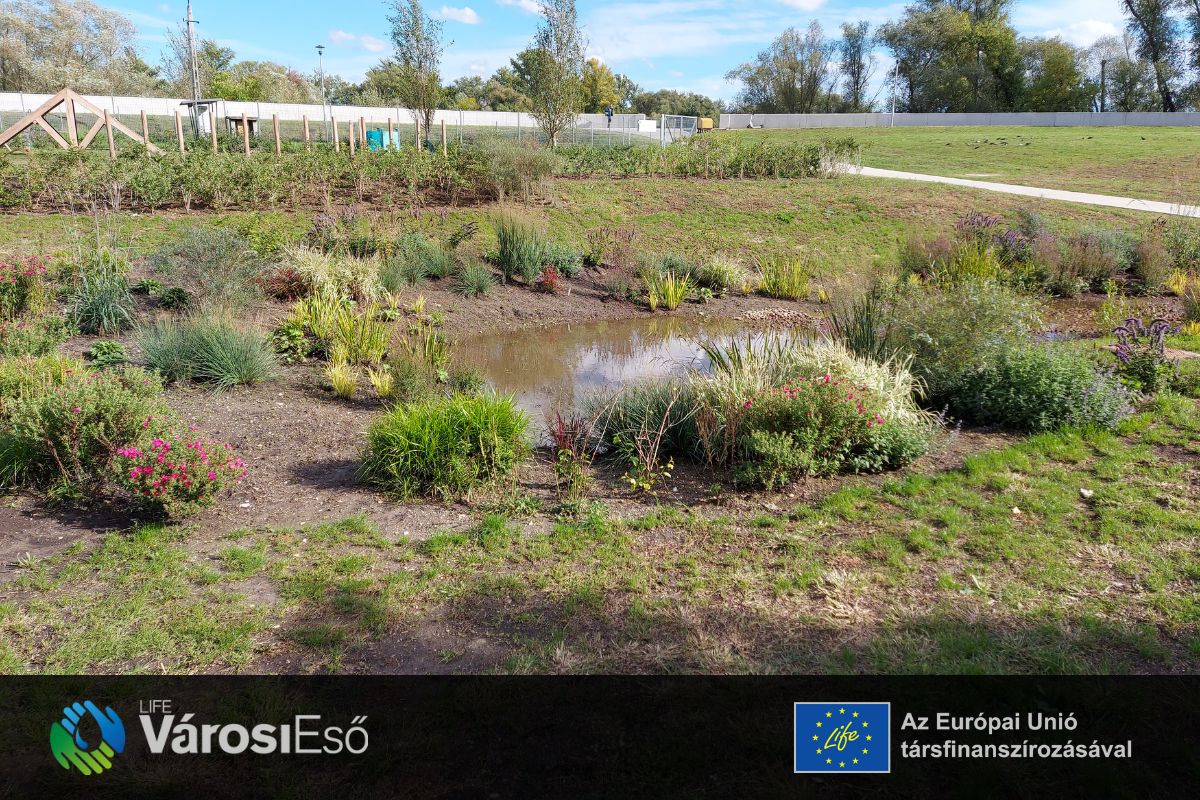
6. Esőkertek telepítése
Ezek többnyire mélyen fekvő területek, a víz folyási irányában telepítve, különböző szárazság és nedvességtűrő növényekkel beültetve. A kialakításuk lehetővé teszi, hogy az esővizet összegyűjtsék, és 1-2 nap alatt elszikkasszák. Ilyeneket kerttel rendelkező épületekben, házakban ki lehet alakítani.
7. Bioretenciós kertek telepítése
A bioretenciós kertek valójában esőkertek egy kis plusz mérnöki furmánnyal fűszerezve. Ezeknél az első rétegként egy speciálisan beszivárgásra optimalizált földréteget, ami alá vízmegtartás céljából kialakított kavicságy kerül. Ezen felül a kavicságyban a vízszint szabályozására plusz vízelvezető van alattuk, ami a kert határain kívülre folyatja egy bizonyos szint feletti, a növények szempontjából már soknak számító többlet vizet. A vízelvezető tulajdonképpen egy kiálló cső a kertben, ami lefolyóként funkcionál amint túl magasra emelkedik a vízszint. A bioretenciós kertekre tulajdonképpen egy magasabb szintű esőkertként kell gondolni, ahol pontosabban beállíthatók olyan célok, mint a szennyeződések kiszűrésének mértéke, a talaj telített vízvezetőképessége, vagy a telepített növények egészséges környezete. Ezt leszámítva pozitív hatásában megegyezik az esőkertekkel.
Remélhetőleg ez az összefoglaló segített átfogóbb képet adni a városi vízkezelés zöld megoldásait illetően.



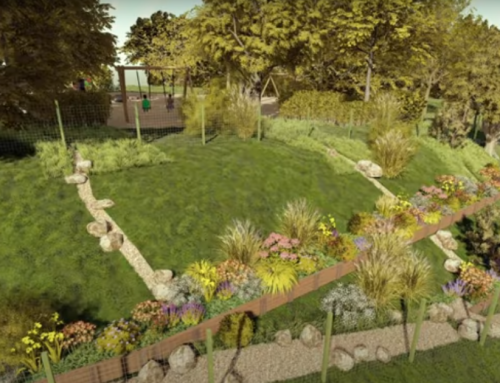
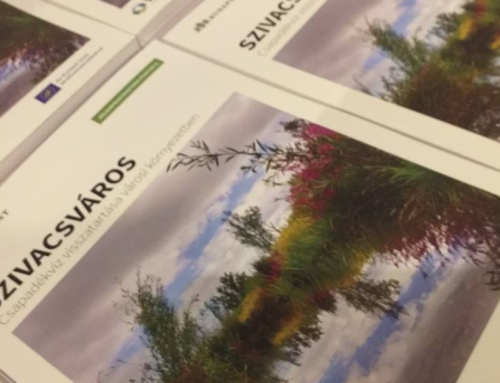
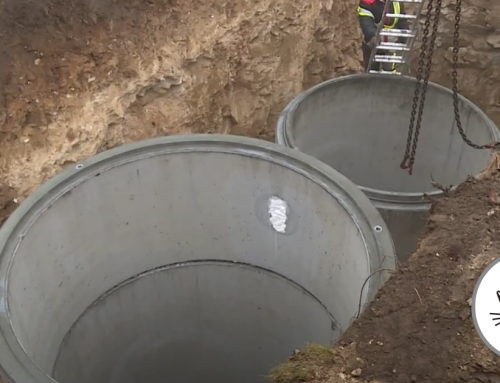
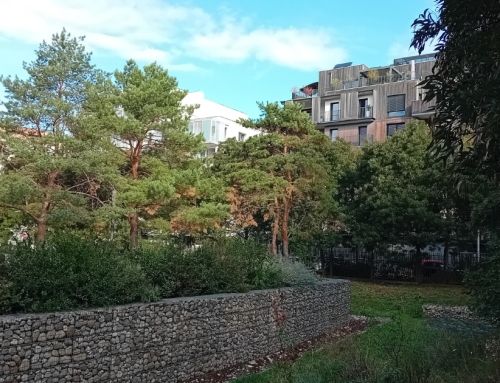
Hagyj üzenetet